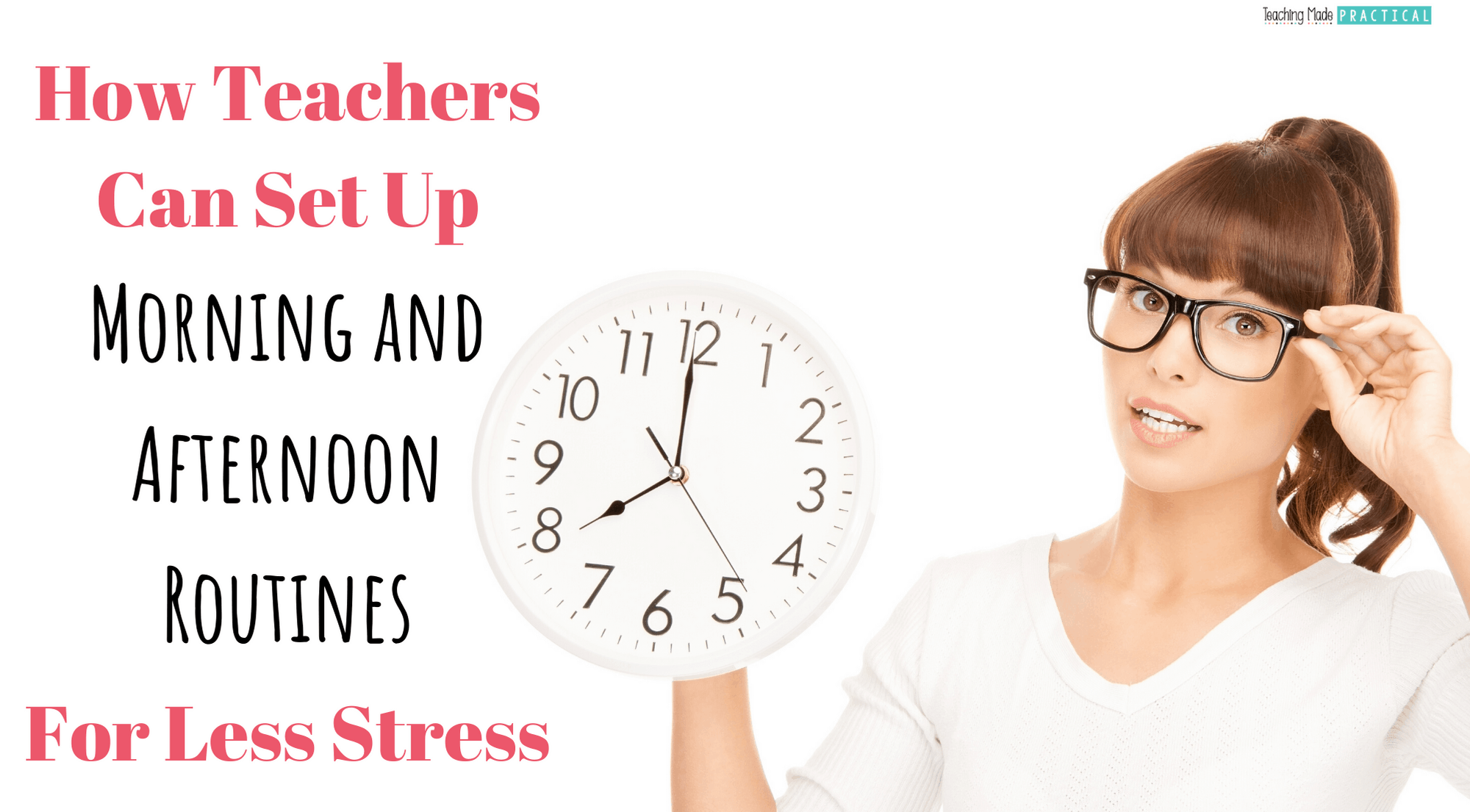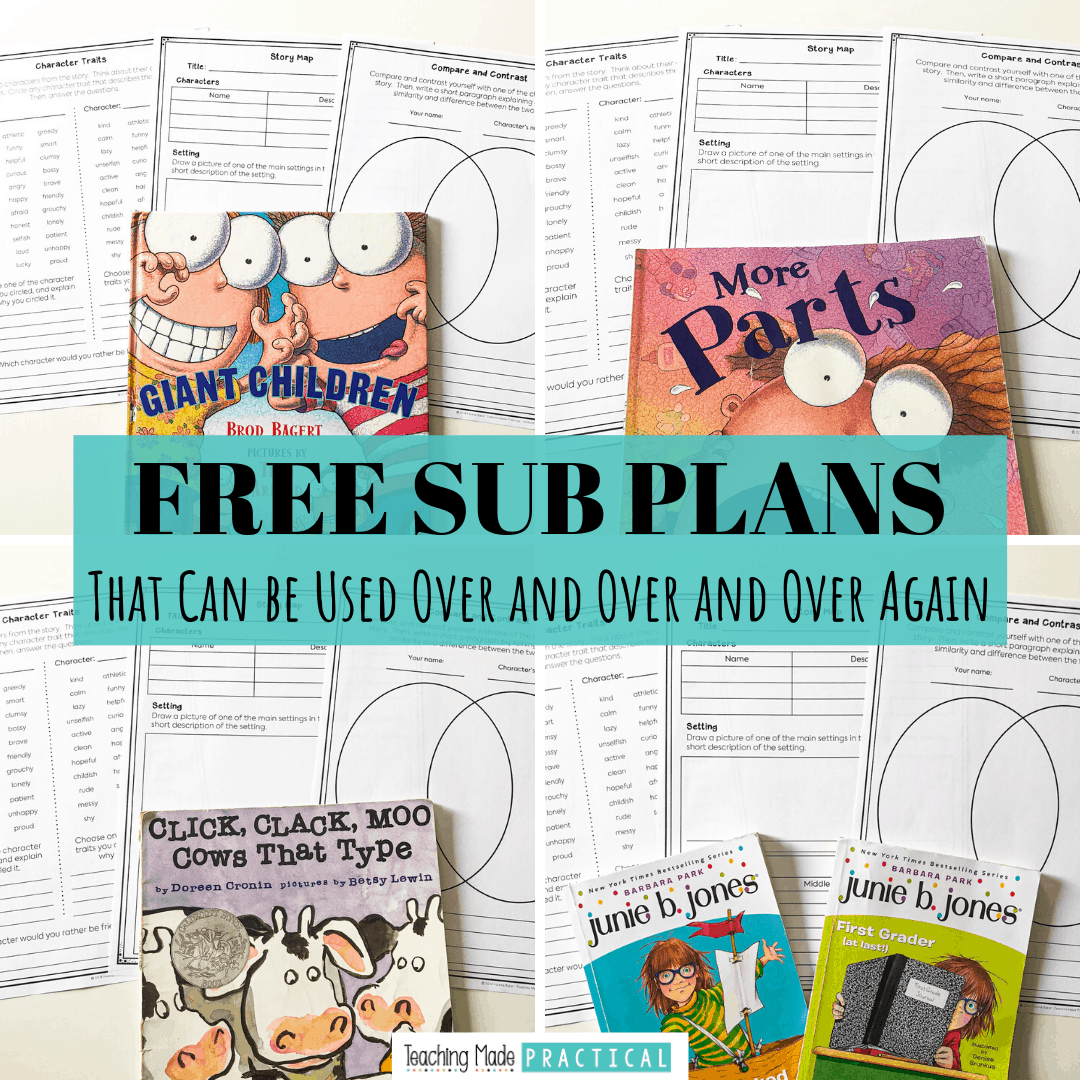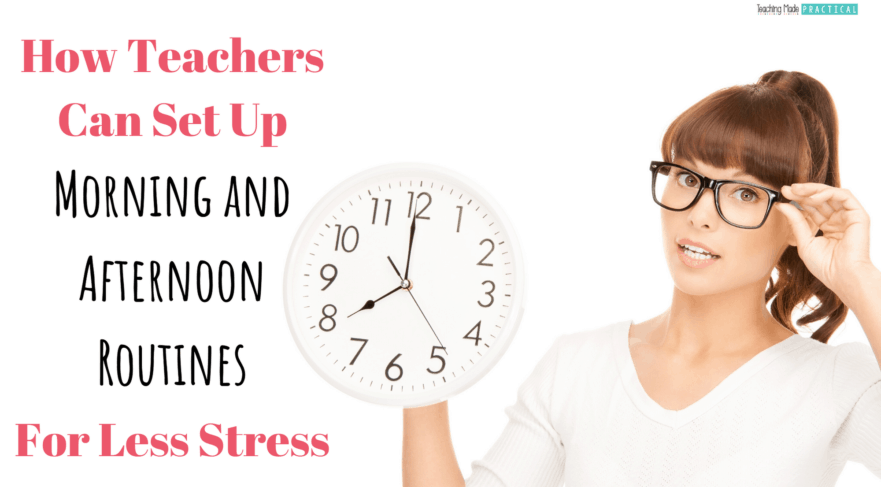
We help our students establish morning routines and dismissal routines - why are teacher morning routines and afternoon routines not more prevalent?
If you take the time to create an intentional morning routine that helps get you feel prepared for the day, then you can start the day off stress free.
Having an afternoon routine that you go through before you leave school can be especially helpful for teachers who feel like there is always more to do. If you follow the same routine every day before leaving, then eventually this will be a signal to your brain that the work day is over, which allows you to shut your brain off and take time to enjoy your family more easily.
However, teacher morning routines and afternoon routines don't just happen overnight. You have to be intentional about what you want to be included in your routine, and then try to create new habits.
Creating Routines Through Habit Stacking
The hardest part of creating your ideal morning/afternoon/evening routine is making it a habit and actually sticking to it. James Clear's book Atomic Habits has been the most helpful book for me in creating productive habits in my life. It has very practical, realistic tips about forming and breaking new habits.
One of the tips that really worked for me is habit stacking. Habit stacking is identifying something you already do everyday habitually, and then being intentional about creating a new habit by linking it to that original habit.
For example, every morning when I first walked into my 3rd grade classroom, I would open a Dr. Pepper. 🙈 Although this wasn't the best habit, it was something I did every day. So, I stacked a new habit on top of that - after opening a Dr. Pepper, I would sit down and mentally walk through my day, making notes about things that still needed to be prepped.
When you do one thing immediately followed by something else enough, your brain begins to link these things together, so it becomes much easier to create habits.
Habit stacking is perfect for creating routines. Start with something you already do, and then think about what daily habit you would like in your ideal routine. Add 1 new habit. Then, once you have that habit down, add a new habit. Repeat until you have the morning routine you want.
You can read an excerpt about habit stacking from James Clear's book here.
Creating Routines With the "2 Minute Rule"
In his book, James talks about how most of us start off creating a new routine by choosing a time consuming or difficult habit. Many of us fail before we even try because of this.
Instead, he recommends condensing the habit you want to create down to something that will only take you 2 minutes to complete. This makes it much easier to start and stick to a new habit. Once you get into a routine, you can extend your new habit past the initial 2 minutes.
"The point is to master the habit of showing up. The truth is, a habit must be established before it can be improved. If you can’t learn the basic skill of showing up, then you have little hope of mastering the finer details. Instead of trying to engineer a perfect habit from the start, do the easy thing on a more consistent basis. You have to standardize before you can optimize."
I used this to 2 Minute Rule to help me create a habit of working out regularly in the mornings. Instead of going for a 2 mile run or completing a 30 minute kickboxing video every morning, I told myself that I would stretch for 2 minutes. My mind didn't resist the idea of a 2 minute stretch like it resisted a 2 mile run.
So, every day when I got up in the morning, I would stretch for 2 minutes. Some days that was all I did. Other days, the stretching energized me and I added a workout or yoga to the stretching. Eventually, this 2 minute rule turned into the habit of working out 5 days a week. On the days I don't work out, I still do a quick stretch, so that I don't lose that habit. Now, it feels weird to me to NOT work out in the mornings.
This 2 minute rule can easily be applied to the classroom as well. Perhaps you want to create a habit of grading papers daily. Start with the two minute rule, and grade papers for 2 minutes every school day at a particular time of day or as part of your morning or afternoon routine. You can almost always make time to do something for 2 minutes, and chances are you will continue for longer than that once you actually get started.
In his book, James Clear has a lot more tips about how to make this 2 minute rule work for you, but you can read a short excerpt here.
Creating A Teacher Morning Routine and Afternoon Routine in Your Classroom
There's no one-size-fits-all routine that will work for every teacher. As you are thinking about creating routines for your 3rd, 4th, or 5th grade classroom, think about the things that you need to do every day - maybe things that are constantly stressing you out or things you often forget to do.
Some things you might want to add to your teacher morning routines and afternoon routines:
- prepping materials
- making copies
- writing objectives
- finishing up lesson plans
- grading papers - (and if you aren't using rubrics to help you grade, you should be!)
- making a positive parent contact
- checking emails
- clearing off your desk
- passing out papers
- reflecting/journaling
As you think about what you would like your morning and afternoon routine to look like, write it out. Then, start small with one new habit in the morning when you enter the classroom and one in the afternoon before you leave. Then, habit stack with a new habit, changing and adapting the routine as you go. Eventually you will have created a morning and afternoon routine that you love.
Setting up teacher morning routines and afternoon routines is one of my teacher habits for effective and efficient teachers.
Never Stress Over Sub Plans Again!

Make copies, find a fiction book, and you'll be ready for any emergency that comes your way!


